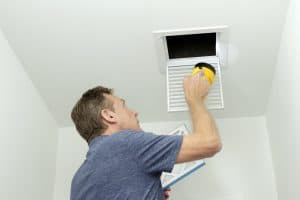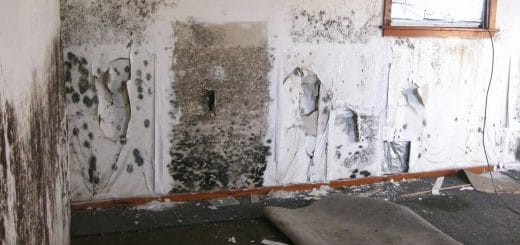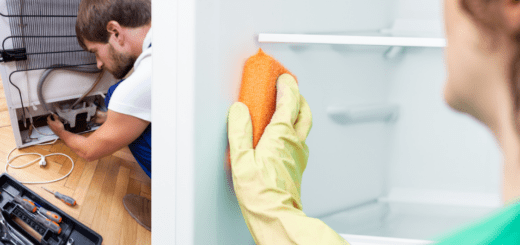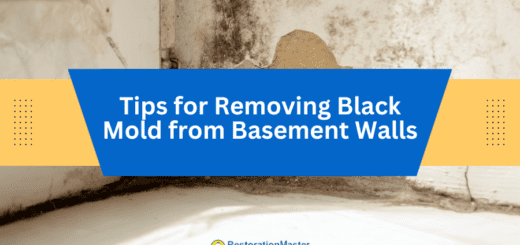How to Prevent Mold in the Winter
MoldMold is a type of fungus that grows in damp or humid conditi... More sporesSpores are microscopic reproductive units of fungi or mold t... More are all around us, but the growth of moldMold is a type of fungus that grows in damp or humid conditi... More can be prevented. MoldMold is a type of fungus that grows in damp or humid conditi... More needs moisture, warmth, and food in order to grow in your home. When you deprive moldMold is a type of fungus that grows in damp or humid conditi... More of moisture, warmth and food, you will stop it from growing, but you won’t kill the mold that is already there. The moldMold is a type of fungus that grows in damp or humid conditi... More sporesSpores are microscopic reproductive units of fungi or mold t... More will stay dormant and start growing again if not treated by professional mold remediation techniques. So, it’s important to keep moldMold is a type of fungus that grows in damp or humid conditi... More from growing in the first place.
MoldMold is a type of fungus that grows in damp or humid conditi... More Growth in Cold Climates

Remove possible sources of moldMold is a type of fungus that grows in damp or humid conditi... More growth by regularly vacuuming and cleaning
If you live in a climate where you need to heat your home frequently, moldMold is a type of fungus that grows in damp or humid conditi... More can start growing in the winter on your home’s inside walls, especially on the surfaces closest to the outside of your home. The wet season during winter is actually one of the most prominent times for moldMold is a type of fungus that grows in damp or humid conditi... More growth, due to the amount of melting snow, ice, and warm inside temperatures. As the moldMold is a type of fungus that grows in damp or humid conditi... More grows, it will slowly consume and breakdown the building materials on which it grows, quickly creating the need for replacement.
Moisture that travels through the air from your basement, bathroom, or kitchen may condense when it comes in contact with a cold wall.
Preventing MoldMold is a type of fungus that grows in damp or humid conditi... More Growth
The importance of preventing moldMold is a type of fungus that grows in damp or humid conditi... More growth should always be taken seriously as doing so will keep the building strong and everyone on the property healthy.
A popular tip to prevent moldMold is a type of fungus that grows in damp or humid conditi... More growth is to make sure your walls are well-insulated. Well-insulated walls can prevent condensation and moldMold is a type of fungus that grows in damp or humid conditi... More, as well as cut down on your heating and cooling bills.
Here are some other steps you can take to prevent moldMold is a type of fungus that grows in damp or humid conditi... More growth during the winter:
- Keep all areas clean.
- Ensure that the home or building has adequate air circulation. During a shower, cooking, or washing dishes, keep a window open or turn on an exhaust fan.
- Prevent moldMold is a type of fungus that grows in damp or humid conditi... More and water damage by turning off the water supply to broken appliances and pipes.
- If the temperature outside is below freezing, take steps to insulate your pipes both inside and out to prevent them from freezing and floodingFlooding is the overflow or accumulation of water in areas t... More the surrounding areas.
- Ensure that the seals on your windows and doors are functional and moisture is not seeping through the cracks.
- Ensure that the foundation of the property sits on a hill, allowing water to flow away from the structureStructure refers to the framework or components of a buildin... More instead of pooling into low-sitting and underground building materials.
- If you find any condensation on your windows, walls, or pipes, don’t hesitate to dry out the area and identify the source of the condensation. Common sources include leaks and high humidityHumidity is the amount of moisture or water vapor present in... More levels.
- Ensure that your indoor humidityHumidity is the amount of moisture or water vapor present in... More level is below 40 percent. If you use a humidifier, as many of us do in the winter, make sure it does not produce an excessive amount of humidityHumidity is the amount of moisture or water vapor present in... More.
- Remove possible sources of moldMold is a type of fungus that grows in damp or humid conditi... More growth by regularly vacuuming and cleaning. Pay close attention to bathrooms and other areas of your home that are likely to generate a lot of moisture.
- Use area rugs or washable floor surfaces rather than wall-to-wall carpeting in areas or rooms that have a moisture issue. It’s not usually a great idea to have carpeting in your entryway, for instance, if you live in a cooler, wet climate.
- Paper, books and clothing are sources of food for moldMold is a type of fungus that grows in damp or humid conditi... More, so don’t store them in humid parts of your home, such as your basement, especially close to the floor or walls.
- Leaks in your roof or windows need to be repaired as soon as possible.
- Make sure that your gutters and downspouts are clean and that the area under your downspouts is graded so that water from the roof flows away from your foundation. If necessary, extend your downspouts.
- In the bathroom and kitchen, use exhaust fans or open windows when producing moisture, such as taking a hot shower. Exhaust fans should be vented to the outdoors and not to an attic or crawl space.
- Make sure your clothes dryer is vented to the outdoors.
- Consider getting a dehumidifierA dehumidifier is a device that removes excess moisture from... More for your basement. The cool basement floor and walls can be a source of moisture build-up, and a dehumidifierA dehumidifier is a device that removes excess moisture from... More will control the humidityHumidity is the amount of moisture or water vapor present in... More level and make it harder for moldMold is a type of fungus that grows in damp or humid conditi... More to start growing.
- Make sure your attic is well insulated and ventilated.
- If you have a crawl space under your house, cover the soil in the crawl space with waterproof polyethylene plastic. If your crawl space has vents, close the vents in the summer and keep them open in the winter.
- If you have water problems in your basement or crawl space, clean up affected areas as quickly as possible and call an expert.
MoldMold is a type of fungus that grows in damp or humid conditi... More Removal

If you have water problems in your basement or crawl space, clean up affected areas as quickly as possible
MoldMold is a type of fungus that grows in damp or humid conditi... More can cause a number of problems after it starts growing on any of the building materials in your home. While there are many steps that can be taken to prevent moldMold is a type of fungus that grows in damp or humid conditi... More growth, and taking these measures is much easier than removing it, sometimes moldMold is a type of fungus that grows in damp or humid conditi... More still finds its way in.
For property owners that discover moldMold is a type of fungus that grows in damp or humid conditi... More growth, it’s important to call in a professional mold remediation specialist to have it removed quickly. Handling any type of DIY moldMold is a type of fungus that grows in damp or humid conditi... More project can be dangerous and worsen the problem as the fungus disperses its sporesSpores are microscopic reproductive units of fungi or mold t... More into the breathing air, searching for other moist areas to develop.
When handled by an expert, they will cut off the source of the moldMold is a type of fungus that grows in damp or humid conditi... More, preventing it from growing. After creating a containment chamber, the professional will use advanced products and processes to remove it at the source and the sporesSpores are microscopic reproductive units of fungi or mold t... More surrounding the area. To ensure the fungus doesn’t return and eliminate the remaining bacteria, anti-microbials are applied to the area.
Mold RemediationMold remediation is the process of identifying, removing, an... More and Water Damage RestorationWater damage restoration is the professional process of clea... More
Many professionals who provide mold removal also provide water damage restorationWater damage restoration is the professional process of clea... More and can handle everything from small water damaged areas to flooded basements. They are also available 24/7 and will respond right away to emergencies. Don’t hesitate to call your local mold removal and water damage restoration professional as soon as you notice the damage to your property.












